EPA Methods List with Links
EPA Methods List with Links
EPA Methods List with Links
US EPA Method 1 - Sample And Velocity Traverses For Stationary Sources
NOTE: This method does not include all of the specifications (e.g., equipment and supplies) and procedures (e.g., sampling) essential to its performance. Some material is incorporated by reference from other methods in this part. Therefore, to obtain reliable results, persons using this method should have a thorough knowledge of at least the following additional test method: Method 2.
Content [ show/hide ].1.0 Scope and Application.
1.1 Measured Parameters.
The purpose of the method is to provide guidance for the selection of sampling ports and traverse points at which sampling for air pollutants will be performed pursuant to regulations set forth in this part. Two procedures are presented: a simplified procedure, and an alternative procedure (see Section 11.5). The magnitude of cyclonic flow of effluent gas in a stack or duct is the only parameter quantitatively measured in the simplified procedure.
1.2 Applicability.
This method is applicable to gas streams flowing in ducts, stacks, and flues. This method cannot be used when: (1) the flow is cyclonic or swirling; or (2) a stack is smaller than 0.30 meter (12 in.) in diameter, or 0.071 m2 (113 in.2) in cross-sectional area. The simplified procedure cannot be used when the measurement site is less than two stack or duct diameters downstream or less than a half diameter upstream from a flow disturbance.
1.3 Data Quality Objectives.
Adherence to the requirements of this method will enhance the quality of the data obtained from air pollutant sampling methods.
NOTE: The requirements of this method must be considered before construction of a new facility from which emissions are to be measured; failure to do so may require subsequent alterations to the stack or deviation from the standard procedure. Cases involving variants are subject to approval by the Administrator.
2.0 Summary of Method.
2.1 This method is designed to aid in the representative measurement of pollutant emissions and/or total volumetric flow rate from a stationary source. A measurement site where the effluent stream is flowing in a known direction is selected, and the cross-section of the stack is divided into a number of equal areas. Traverse points are then located within each of these equal areas.
3.0 Definitions. [Reserved]
4.0 Interferences. [Reserved]
5.0 Safety.
5.1 Disclaimer.
This method may involve hazardous materials, operations, and equipment. This test method may not address all of the safety problems associated with its use. It is the responsibility of the user of this test method to establish appropriate safety and health practices and determine the applicability of regulatory limitations prior to performing this test method.
6.0 Equipment and Supplies.
6.1 Apparatus.
The apparatus described below is required only when utilizing the alternative site selection procedure described in Section 11.5 of this method.
6.1.1 Directional Probe.
Any directional Probe, such as United Sensor Type DA Three-Dimensional Directional Probe, capable of measuring both the pitch and yaw angles of gas flows is acceptable. Before using the Probe, assign an identification number to the directional Probe, and permanently mark or engrave the number on the body of the Probe. The pressure holes of directional Probes are susceptible to plugging when used in particulate-laden gas streams. Therefore, a procedure for cleaning the pressure holes by "back-purging" with pressurized air is required.
6.1.2 Differential Pressure Gauges
Inclined manometers, U-tube manometers, or other differential pressure gauges (e.g., magnehelic gauges) that meet the specifications described in Method 2, Section 6.2.
NOTE: If the differential pressure gauge produces both negative and positive readings, then both negative and positive pressure readings shall be calibrated at a minimum of three points as specified in Method 2, Section 6.2.
7.0 Reagents and Standards. [Reserved]
8.0 Sample Collection, Preservation, Storage, and Transport. [Reserved]
9.0 Quality Control. [Reserved]
10.0 Calibration and Standardization. [Reserved]
11.0 Procedure.
11.1 Selection of Measurement Site.
11.1.1 Sampling and/or velocity measurements are performed at a site located at least eight stack or duct diameters downstream and two diameters upstream from any flow disturbance such as a bend, expansion, or contraction in the stack, or from a visible flame. If necessary, an alternative location may be selected, at a position at least two stack or duct diameters downstream and a half diameter upstream from any flow disturbance.
11.1.2 An alternative procedure is available for determining the acceptability of a measurement location not meeting the criteria above. This procedure described in Section 11.5 allows for the determination of gas flow angles at the sampling points and comparison of the measured results with acceptability criteria.
11.2 Determining the Number of Traverse Points.
11.2.1 Particulate Traverses.
11.2.1.1 When the eight- and two-diameter criterion can be met, the minimum number of traverse points shall be: (1) twelve, for circular or rectangular stacks with diameters (or equivalent diameters) greater than 0.61 meter (24 in.); (2) eight, for circular stacks with diameters between 0.30 and 0.61 meter (12 and 24 in.); and (3) nine, for rectangular stacks with equivalent diameters between 0.30 and 0.61 meter (12 and 24 in.).
11.2.1.2 When the eight- and two-diameter criterion cannot be met, the minimum number of traverse points is determined from Figure 1-1. Before referring to the figure, however, determine the distances from the measurement site to the nearest upstream and downstream disturbances, and divide each distance by the stack diameter or equivalent diameter, to determine the distance in terms of the number of duct diameters. Then, determine from Figure 1-1 the minimum number of traverse points that corresponds: (1) to the number of duct diameters upstream; and (2) to the number of diameters downstream. Select the higher of the two minimum numbers of traverse points, or a greater value, so that for circular stacks the number is a multiple of 4, and for rectangular stacks, the number is one of those shown in Table 1-1.
11.2.2 Velocity (Non-Particulate) Traverses.
When velocity or volumetric flow rate is to be determined (but not particulate matter), the same procedure as that used for particulate traverses (Section 11.2.1) is followed, except that Figure 1-2 may be used instead of Figure 1-1.
11.3 Cross-Sectional Layout and Location of Traverse Points.
11.3.1 Circular Stacks.
11.3.1.1 Locate the traverse points on two perpendicular diameters according to Table 1-2 and the example shown in Figure 1-3. Any equation (see examples in References 2 and 3 in Section 16.0) that gives the same values as those in Table 1-2 may be used in lieu of Table 1-2.
11.3.1.2 For particulate traverses, one of the diameters must coincide with the plane containing the greatest expected concentration variation (e.g., after bends); one diameter shall be congruent to the direction of the bend. This requirement becomes less critical as the distance from the disturbance increases; therefore, other diameter locations may be used, subject to the approval of the Administrator.
11.3.1.3 In addition, for elliptical stacks having unequal perpendicular diameters, separate traverse points shall be calculated and located along each diameter. To determine the cross-sectional area of the elliptical stack, use the following equation:
| Square Area | = | D1 x D2 x 0.7854 |
| Where: | D1 = Stack diameter 1 | |
| D2 = Stack diameter 2 |
11.3.1.4 In addition, for stacks having diameters greater than 0.61 m (24 in.), no traverse points shall be within 2.5 centimeters (1.00 in.) of the stack walls; and for stack diameters equal to or less than 0.61 m (24 in.), no traverse points shall be located within 1.3 cm (0.50 in.) of the stack walls. To meet these criteria, observe the procedures given below.
11.3.2 Stacks With Diameters Greater Than 0.61 m (24 in.).
11.3.2.1 When any of the traverse points as located in Section 11.3.1 fall within 2.5 cm (1.0 in.) of the stack walls, relocate them away from the stack walls to: (1) a distance of 2.5 cm (1.0 in.); or (2) a distance equal to the nozzle inside diameter, whichever is larger. These relocated traverse points (on each end of a diameter) shall be the "adjusted" traverse points.
11.3.2.2 Whenever two successive traverse points are combined to form a single adjusted traverse point, treat the adjusted point as two separate traverse points, both in the sampling and/or velocity measurement procedure, and in recording of the data.
11.3.3 Stacks With Diameters Equal To or Less Than 0.61 m (24 in.).
Follow the procedure in Section 11.3.1.1, noting only that any "adjusted" points should be relocated away from the stack walls to: (1) a distance of 1.3 cm (0.50 in.); or (2) a distance equal to the nozzle inside diameter, whichever is larger.
11.3.4 Rectangular Stacks.
11.3.4.1 Determine the number of traverse points as explained in Sections 11.1 and 11.2 of this method. From Table 1-1, determine the grid configuration. Divide the stack cross-section into as many equal rectangular elemental areas as traverse points, and then locate a traverse point at the centroid of each equal area according to the example in Figure 1-4.
11.3.4.2 To use more than the minimum number of traverse points, expand the "minimum number of traverse points" matrix (see Table 1-1) by adding the extra traverse points along one or the other or both legs of the matrix; the final matrix need not be balanced. For example, if a 4 x 3 "minimum number of points" matrix were expanded to 36 points, the final matrix could be 9 x 4 or 12 x 3, and would not necessarily have to be 6 x 6. After constructing the final matrix, divide the stack cross-section into as many equal rectangular, elemental areas as traverse points, and locate a traverse point at the centroid of each equal area.
11.3.4.3 The situation of traverse points being too close to the stack walls is not expected to arise with rectangular stacks. If this problem should ever arise, the Administrator must be contacted for resolution of the matter.
11.4 Verification of Absence of Cyclonic flow.
11.4.1 In most stationary sources, the direction of stack gas flow is essentially parallel to the stack walls. However, cyclonic flow may exist (1) after such devices as cyclones and inertial demisters following venturi scrubbers, or (2) in stacks having tangential inlets or other duct configurations which tend to induce swirling; in these instances, the presence or absence of cyclonic flow at the sampling location must be determined. The following techniques are acceptable for this determination.
11.4.2 Level and zero the manometer. Connect a Type S pitot tube to the manometer and leak-check system. Position the Type S pitot tube at each traverse point, in succession, so that the planes of the face openings of the pitot tube are perpendicular to the stack cross-sectional plane; when the Type S pitot tube is in this position, it is at "0 reference." Note the differential pressure (Δp) reading at each traverse point. If a null (zero) pitot reading is obtained at 0 reference at a given traverse point, an acceptable flow condition exists at that point. If the pitot reading is not zero at 0 reference, rotate the pitot tube (up to ±90 yaw angle), until a null reading is obtained. Carefully determine and record the value of the rotation angle (") to the nearest degree. After the null technique has been applied at each traverse point, calculate the average of the absolute values of "; assign " values of 0 to those points for which no rotation was required, and include these in the overall average. If the average value of " is greater than 20, the overall flow condition in the stack is unacceptable, and alternative methodology, subject to the approval of the Administrator, must be used to perform accurate sample and velocity traverses.
11.5 The Alternative Site Selection
The alternative site selection procedure may be used to determine the rotation angles in lieu of the procedure outlined in Section 11.4.
11.5.1 Alternative Measurement Site Selection Procedure.
This alternative applies to sources where measurement locations are less than 2 equivalent or duct diameters downstream or less than one-half duct diameter upstream from a flow disturbance. The alternative should be limited to ducts larger than 24 in. in diameter where blockage and wall effects are minimal. A directional flowsensing Probe is used to measure pitch and yaw angles of the gas flow at 40 or more traverse points; the resultant angle is calculated and compared with acceptable criteria for mean and standard deviation.
NOTE: Both the pitch and yaw angles are measured from a line passing through the traverse point and parallel to the stack axis. The pitch angle is the angle of the gas flow component in the plane that INCLUDES the traverse line and is parallel to the stack axis. The yaw angle is the angle of the gas flow component in the plane PERPENDICULAR to the traverse line at the traverse point and is measured from the line passing through the traverse point and parallel to the stack axis.
11.5.2 Traverse Points.
Use a minimum of 40 traverse points for circular ducts and 42 points for rectangular ducts for the gas flow angle determinations. Follow the procedure outlined in Section 11.3 and Table 1-1 or 1-2 for the location and layout of the traverse points. If the measurement location is determined to be acceptable according to the criteria in this alternative procedure, use the same traverse point number and locations for sampling and velocity measurements.
11.5.3 Measurement Procedure.
11.5.3.1 Prepare the directional Probe and differential pressure gauges as recommended by the manufacturer. Capillary tubing or surge tanks may be used to dampen pressure fluctuations. It is recommended, but not required, that a pretest leak check be conducted. To perform a leak check, pressurize or use suction on the impact opening until a reading of at least 7.6 cm (3 in.) H20 registers on the differential pressure gauge, then plug the impact opening. The pressure of a leak-free system will remain stable for at least 15 seconds.
11.5.3.2 Level and zero the manometers. Since the manometer level and zero may drift because of vibrations and temperature changes, periodically check the level and zero during the traverse.
11.5.3.3 Position the Probe at the appropriate locations in the gas stream, and rotate until zero deflection is indicated for the yaw angle pressure gauge. Determine and record the yaw angle. Record the pressure gauge readings for the pitch angle, and determine the pitch angle from the calibration curve. Repeat this procedure for each traverse point. Complete a "back-purge" of the pressure lines and the impact openings prior to measurements of each traverse point.
11.5.3.4 A post-test check as described in Section 11.5.3.1 is required. If the criteria for a leak-free system are not met, repair the equipment, and repeat the flow angle measurements.
11.5.4 calibration.
Use a flow system as described in Sections 10.1.2.1 and 10.1.2.2 of Method 2. In addition, the flow system shall have the capacity to generate two test-section velocities: one between 365 and 730 m/min (1,200 and 2,400 ft/min) and one between 730 and 1,100 m/min (2,400 and 3,600 ft/min).
11.5.4.1 Cut two entry ports in the test section. The axes through the entry ports shall be perpendicular to each other and intersect in the centroid of the test section. The ports should be elongated slots parallel to the axis of the test section and of sufficient length to allow measurement of pitch angles while maintaining the pitot head position at the test-section centroid. To facilitate alignment of the directional Probe during calibration, the test section should be constructed of plexiglass or some other transparent material. All calibration measurements should be made at the same point in the test section, preferably at the centroid of the test section.
11.5.4.2 To ensure that the gas flow is parallel to the central axis of the test section, follow the procedure outlined in Section 11.4 for cyclonic flow determination to measure the gas flow angles at the centroid of the test section from two test ports located 90 apart. The gas flow angle measured in each port must be ± 2 of 0. Straightening vanes should be installed, if necessary, to meet this criterion.
11.5.4.3 Pitch Angle calibration. Perform a calibration traverse according to the manufacturer's recommended protocol in 5 increments for angles from -60 to +60 at one velocity in each of the two ranges specified above. Average the pressure ratio values obtained for each angle in the two flow ranges, and plot a calibration curve with the average values of the pressure ratio (or other suitable measurement factor as recommended by the manufacturer) versus the pitch angle. Draw a smooth line through the data points. Plot also the data values for each traverse point. Determine the differences between the measured data values and the angle from the calibration curve at the same pressure ratio. The difference at each comparison must be within 2 for angles between 0 and 40 and within 3 for angles between 40 and 60.
11.5.4.4 Yaw Angle calibration. Mark the three-dimensional Probe to allow the determination of the yaw position of the Probe. This is usually a line extending the length of the Probe and aligned with the impact opening. To determine the accuracy of measurements of the yaw angle, only the zero or null position need be calibrated as follows: Place the directional Probe in the test section, and rotate the Probe until the zero position is found. With a protractor or other angle-measuring device, measure the angle indicated by the yaw angle indicator on the three-dimensional Probe. This should be within 2 of 0. Repeat this measurement for any other points along the length of the pitot where yaw angle measurements could be read in order to account for variations in the pitot markings used to indicate pitot head positions.
12.0 Data Analysis and Calculations.
12.1 Nomenclature.
L = length
n = total number of traverse points.
Pi = pitch angle at traverse point i, degree.
Ravg = average resultant angle, degree.
Ri = resultant angle at traverse point i, degree.
Sd = standard deviation, degree.
W = width.
Yi = yaw angle at traverse point i, degree.
12.2 For a rectangular cross section
An equivalent diameter (De) shall be calculated using the following equation, to determine the upstream and downstream distances:
 Eq. 1-1
Eq. 1-1
12.3 If use of the alternative site selection procedure (Section 11.5 of this method) is required
Perform the following calculations using the equations below: the resultant angle at each traverse point, the average resultant angle, and the standard deviation. Complete the calculations retaining at least one extra significant figure beyond that of the acquired data. Round the values after the final calculations.
12.3.1 Calculate the resultant angle at each traverse point:
![]() Eq. 1-2
Eq. 1-2
12.3.2 Calculate the average resultant for the measurements:
![]() Eq. 1-3
Eq. 1-3
12.3.3 Calculate the standard deviations:
 Eq. 1-4
Eq. 1-4
12.3.4 Acceptability Criteria.
The measurement location is acceptable if Ravg ≤ 20 and Sd ≤ 10.
13.0 Method Performance. [Reserved]
14.0 Pollution Prevention. [Reserved]
15.0 Waste Management. [Reserved]
16.0 References.
1. Determining Dust Concentration in a Gas Stream, ASME Performance Test Code No. 27. New York. 1957.
2. DeVorkin, Howard, et al. Air Pollution Source Testing Manual. Air Pollution Control District. Los Angeles, CA. November 1963.
3. Methods for Determining of Velocity, Volume, Dust and Mist Content of Gases. Western Precipitation Division of Joy Manufacturing Co. Los Angeles, CA. Bulletin WP-50. 1968.
4. Standard Method for Sampling Stacks for Particulate Matter. In: 1971 Book of ASTM Standards, Part 23. ASTM Designation D 2928-71. Philadelphia, PA. 1971.
5. Hanson, H.A., et al. Particulate Sampling Strategies for Large Power Plants Including Nonuniform flow. USEPA, ORD, ESRL, Research Triangle Park, NC. EPA-600/2-76-170. June 1976.
6. Entropy Environmentalists, Inc. Determination of the Optimum Number of Sampling Points: An Analysis of Method 1 Criteria. Environmental Protection Agency. Research Triangle Park, NC. EPA Contract No. 68-01-3172, Task 7.
7. Hanson, H.A., R.J. Davini, J.K. Morgan, and A.A. Iversen. Particulate Sampling Strategies for Large Power Plants Including Nonuniform flow. USEPA, Research Triangle Park, NC. Publication No. EPA-600/2-76-170. June 1976. 350 pp.
8. Brooks, E.F., and R.L. Williams. flow and Gas Sampling Manual. U.S. Environmental Protection Agency. Research Triangle Park, NC. Publication No. EPA-600/2-76- 203. July 1976. 93 pp.
9. Entropy Environmentalists, Inc. Traverse Point Study. EPA Contract No. 68-02-3172. June 1977. 19 pp.
10. Brown, J. and K. Yu. Test Report: Particulate Sampling Strategy in Circular Ducts. Emission Measurement Branch. U.S. Environmental Protection Agency, Research Triangle Park, NC 27711. July 31, 1980. 12 pp.
11. Hawksley, P.G.W., S. Badzioch, and J.H. Blackett. Measurement of Solids in flue Gases. Leatherhead, England, The British Coal Utilisation Research Association. 1961. pp. 129-133.
12. Knapp, K.T. The Number of Sampling Points Needed for Representative Source Sampling. In: Proceedings of the Fourth National Conference on Energy and Environment. Theodore, L. et al. (ed). Dayton, Dayton Section of the American Institute of Chemical Engineers. October 3-7, 1976. pp. 563-568.
13. Smith, W.S. and D.J. Grove. A Proposed Extension of EPA Method 1 Criteria. Pollution Engineering. XV (8):36-37. August 1983.
14. Gerhart, P.M. and M.J. Dorsey. Investigation of Field Test Procedures for Large Fans. University of Akron. Akron, OH. (EPRI Contract CS-1651). Final Report (RP-1649- 5). December 1980.
15. Smith, W.S. and D.J. Grove. A New Look at Isokinetic Sampling - Theory and Applications. Source Evaluation Society Newsletter. VIII(3):19-24. August 1983.
17.0 Tables, Diagrams, Flowcharts, and Validation Data.
Figure 1-1. Minimum number of traverse points for particulate traverses.
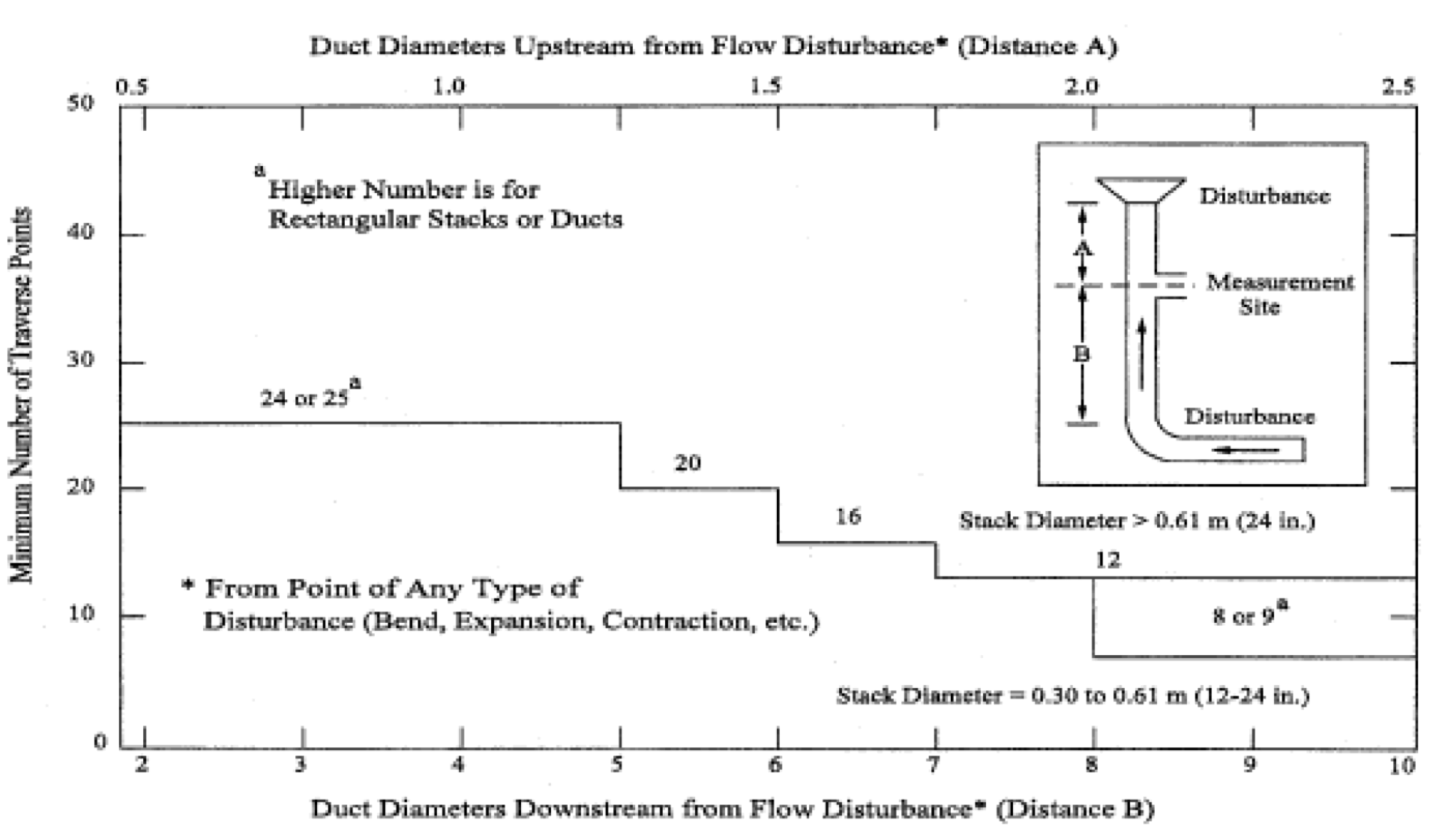
TABLE 1-1. CROSS-SECTION LAYOUT FOR RECTANGULAR STACKS
Number of tranverse points
layout . . . . . . . . . . . . . Matrix
9 . . . . . . . . . . . . . . . . 3 x 3
12 . . . . . . . . . . . . . . . . 4 x 3
16 . . . . . . . . . . . . . . . . 4 x 4
20 . . . . . . . . . . . . . . . . 5 x 4
25 . . . . . . . . . . . . . . . . 5 x 5
30 . . . . . . . . . . . . . . . . 6 x 5
36 . . . . . . . . . . . . . . . . 6 x 6
42 . . . . . . . . . . . . . . . . 7 x 6
49 . . . . . . . . . . . . . . . . 7 x 7
Figure 1-2. Minimum number of traverse points for velocity (nonparticulate) traverses.
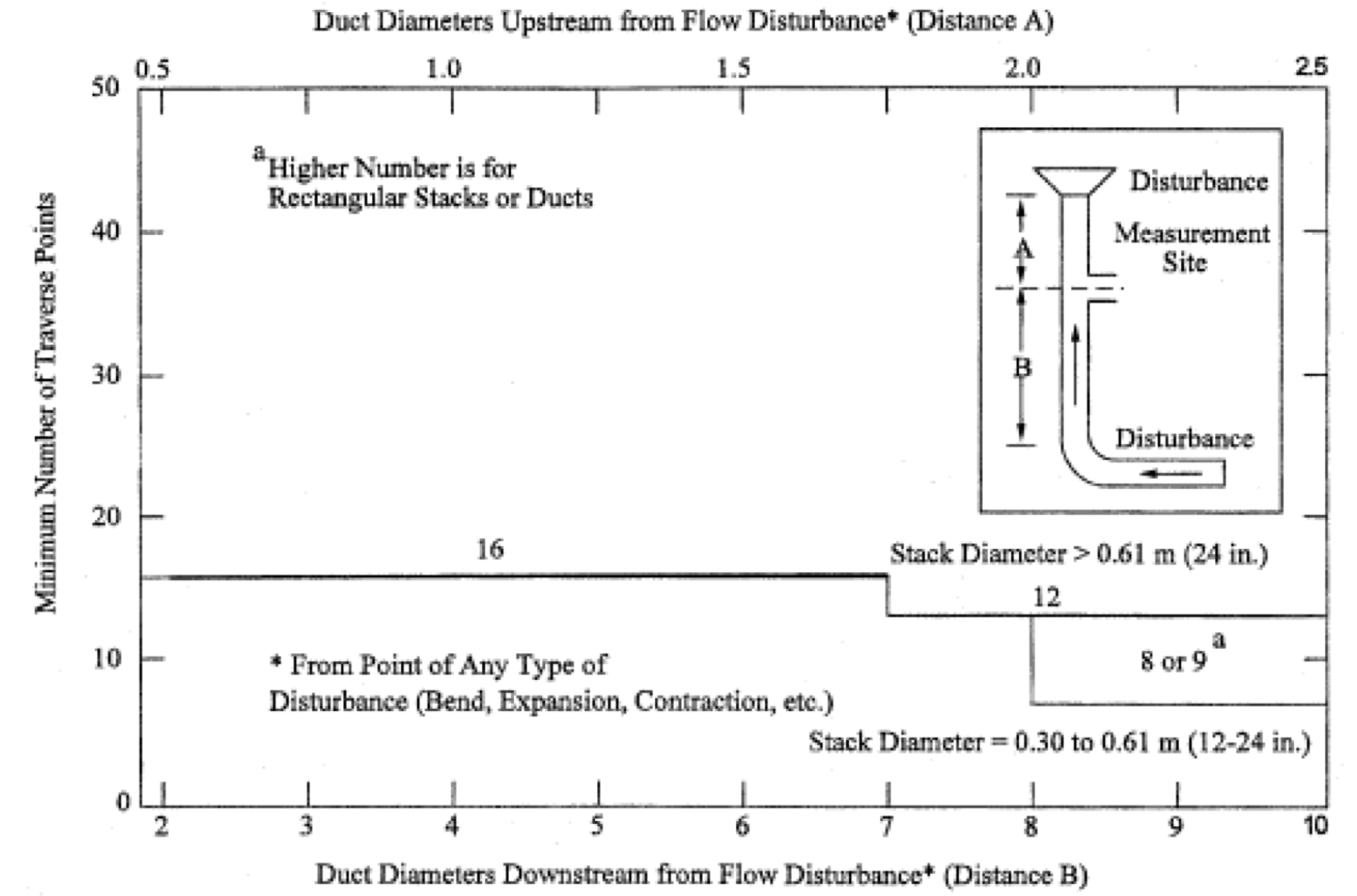
LOCATION OF TRAVERSE POINTS IN CIRCULAR STACKS
(Percent of stack diameter from inside wall to traverse point)
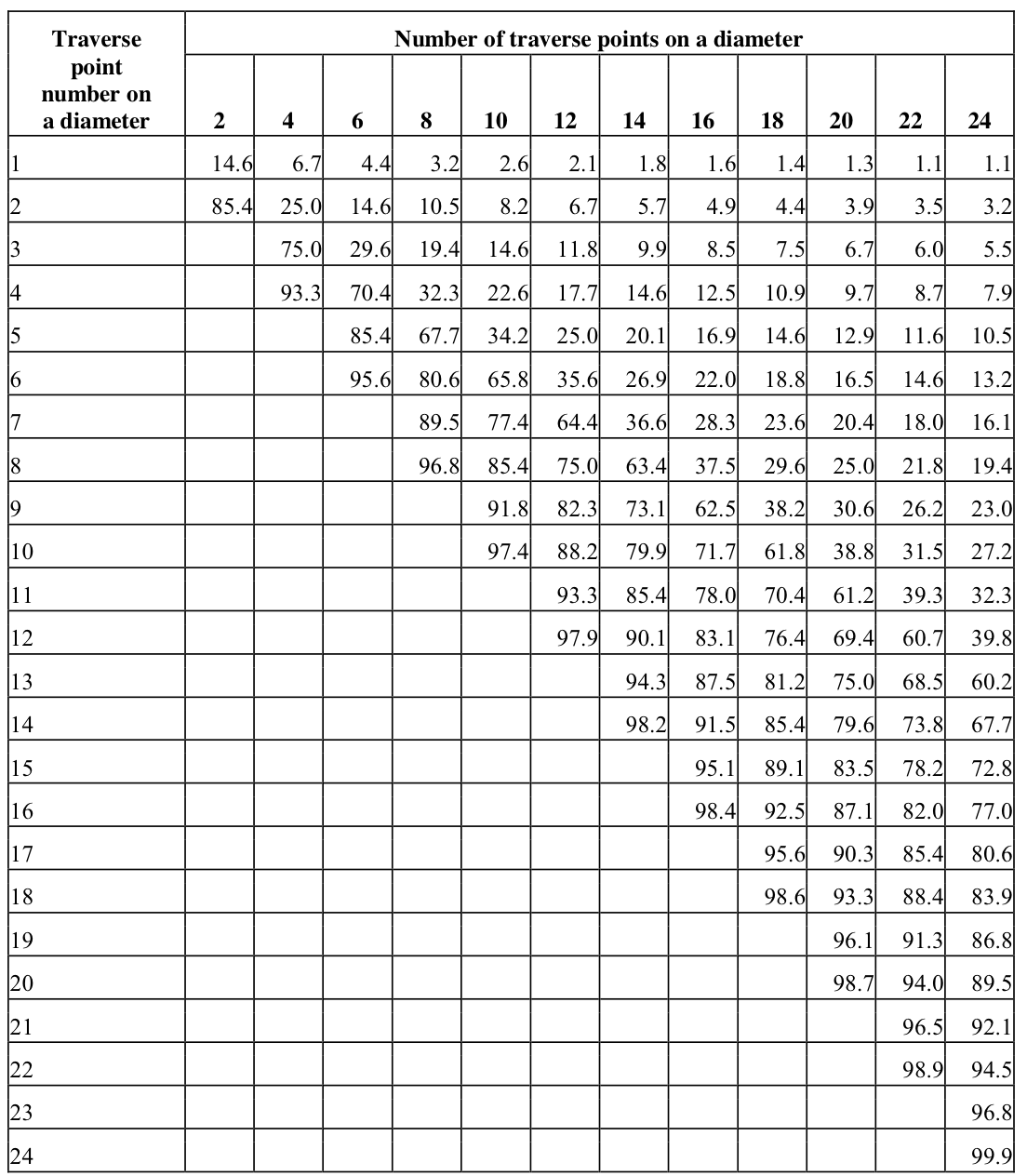
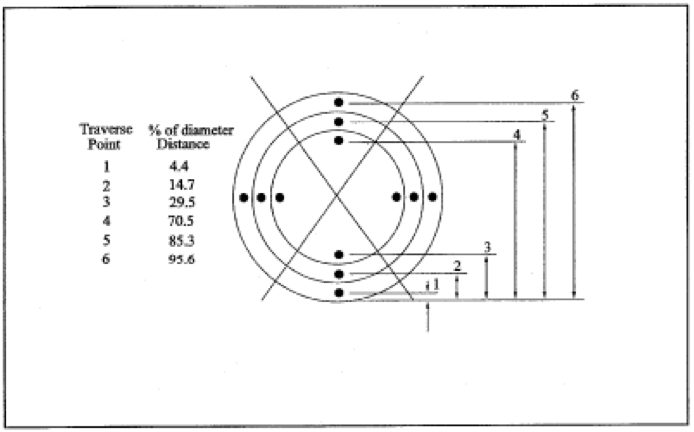
Figure 1-3. Example showing circular stack cross section divided into 12 equal areas,
with location of traverse points.
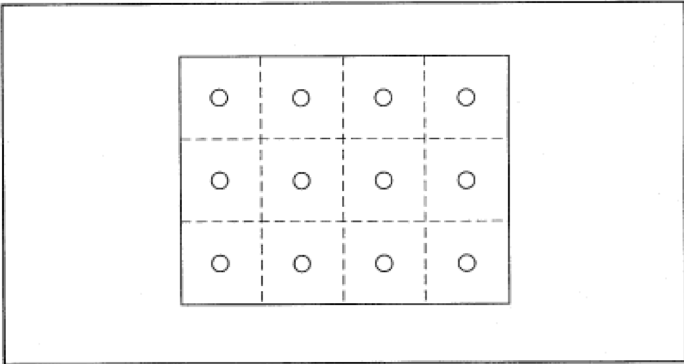
Figure 1-4. Example showing rectangular stack cross section divided into 12
equal areas, with traverse points at centroid of each area.
RELATED LINKS
Eastern Technical Associates (Thanks to Tom Rose for all he did for opacity.)
USA EPA Webpage for EPA Method 1
Comparison of This Page with EPA Method 1 online.
Document Titled - PARTICULATE SAMPLING IN CYCLONIC FLOW October 1989
Document Titled - PARTICULATE SAMPLING IN CYCLONIC FLOW (DRAFT Revised January 2003
- Analytical
- Ion Chromatography
- Gas Chromatography
- Gravimetrics
- Ash Resistivity
- Inks/Coatings
- Scrubber Stoichiometry
- Titrations
- Mercury Sorbent Trap
- Engineering
- Express Products
- Rental Instruments
- MET80 Mercury Monitor
- Continuous Emission Monitors
- Gas Sampling Equipment
- Mobile Power Supply
Our Resources
- Technical Resources

 Express
Express FTIR
FTIR Mercury
Mercury Emission Sampling Equipment
Emission Sampling Equipment Instrument Rental
Instrument Rental